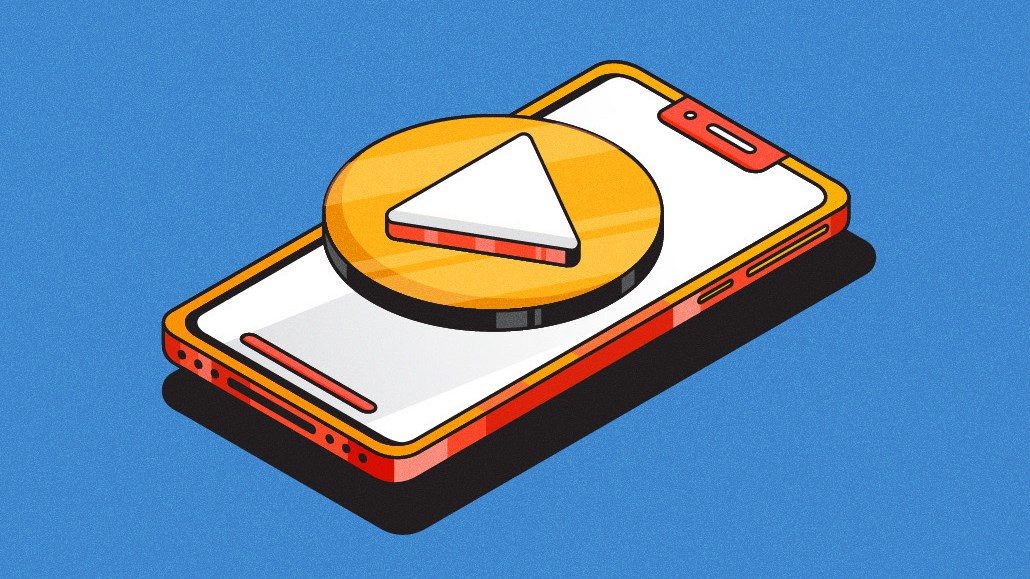Save 50% on a 3-month Digiday+ membership. Ends Dec 5.
Return of the Spongmonkeys: How Quiznos is using nostalgia to revamp its marketing efforts

After almost two decades of absence, the infamous Spongmonkeys are back and leading Quiznos’ return to marketing this year in light of new ownership and a tumultuous last few years.
The iconic, or rather infamous, pair of potato shaped critters with human features were part of the sandwich shop’s marketing strategy 20-years-ago. (Refresher here). Now, as the 42-year-old fast-food chain looks to return to marketing with an almost entirely digital strategy, Quiznos is using the nostalgia of mid-2000s-internet stardom.
“Since 2018, an immense amount of strides have been taken to establish foundation for and begin the growth of this brand,” said Brent Phillip, CMO at REGO Restaurant Group, Quiznos parent company, referring to the the company’s acquisition by High Bluff Capital Partners in 2018.
For the last few years, Quiznos has been working to revitalize the brand and boost awareness with activations, targeted and personalized digital advertising, limited time offering promotions and more. By opting for a predominately digital strategy, Quiznos hopes to better target audiences, and quickly pivot both creative assets and messaging based on customer reactions.
In its heyday of the early 2000s, Quiznos had at least 4,700 sandwich shops nationwide, national ads and a buzzy internet presence. By the mid-2000s, Quiznos hit a rough patch closing restaurant locations, pulling the plug on television ads and hoping to win customers back via its app. Ultimately, thanks to what industry reports labeled a bad business model, stiff competition from the likes of Subway and the Great Recession of 2007, Quiznos filed for bankruptcy in 2014.
Four years later, the company came under new ownership of High Bluff Capital Partners private investment firm and by this July, had announced its first major marketing campaign featuring the Spongmonkeys. There are now an estimated 150 Quiznos locations nationwide with restaurant franchising beginning again last year.
The current strategy is said to be digital-first with social, display, hyperlocal out-of-home ads, and streaming ads among other channels to target audiences. The bulk of it seemingly hinges on the Spongmonkeys and the hope that Gen Z’s sense of humor will appreciate them too. It’s unclear how much Quiznos is spending on these efforts as the brand did not respond to a request for details in time for publication.
Ad position: web_incontent_pos1
“We have full interest in maintaining that entertainment, shock factor disruptiveness with our audiences,” he said. “We’re also very much interested in really blowing up the social media presence that Quiznos brand has had in years past.” It’s a strategy seemingly more brands are leaning into, especially with the introduction of Meta’s Threads.
Notably, Quiznos has yet to join the ranks of the so-called unhinged brands looking to use levity in its brand voice on Threads, a channel that Phillip called “interesting.” The restaurant chain has secured its handle. But unlike its competitors, Subway, Jimmy John’s and Firehouse Subs, Quiznos has yet to post to the Meta-owned site, opting to wait and see how the platform shakes out. There have been, and continue to be, organic, albeit infrequent, posts to X (formerly Twitter) where Quiznos has 118,200 followers.
The biggest social presence is on the restaurant’s recently launched YouTube channel, where its only video, a new Spongmonkeys spot, has racked up more than 155,000 views since it was posted two weeks ago. But, Phillip added, the return is in its early stages, hinting at the idea that there’s more to come.
Last year, Quiznos spent $110,975 on ad spend, according to Vivvix, including paid social data from Pathmatics. In Q1 of this year, the restaurant chain spent just over $6,000, followed by another nearly $19,000 from April to June.
Nostalgia has been a go-to marketing strategy for many brands for years hoping to reconnect with customers of yesteryear and pique the interest of newer ones. Especially as Gen Z finds inspiration from 90s and early 2000s fashion, music and culture.
Ad position: web_incontent_pos2
Nostalgia brings back consumers, said Dave Coleman, president of Ocean Media ad agency. That’s something that more advertisers are doing “because then you’re not having to go establish a new brand platform. You’re able to tap into some of that brand equity that you had built previously,” he said.
For Quiznos, Phillip hopes the Spongmonkeys and their online presence can carry the brand into the future, bringing millennials and Gen Z along for the ride on the wave of nostalgia.
“That’s the hope for sure,” he said. “The engagement and the data will tell us otherwise.”
More in Marketing

Ulta, Best Buy and Adidas dominate AI holiday shopping mentions
The brands that are seeing the biggest boost from this shift in consumer behavior are some of the biggest retailers.

U.K. retailer Boots leads brand efforts to invest in ad creative’s data layer
For media dollars to make an impact, brands need ad creative that actually hits. More CMOs are investing in pre- and post-flight measurement.

‘AI is permeating everything we do’: How Guitar Center developed 2 AI tools this year
This summer, the company launched a chatbot called Rig Advisor to help customers find the right instruments and products.
Ad position: web_bfu




